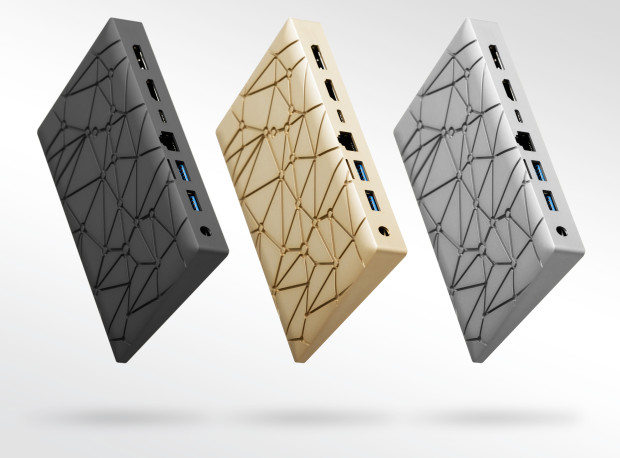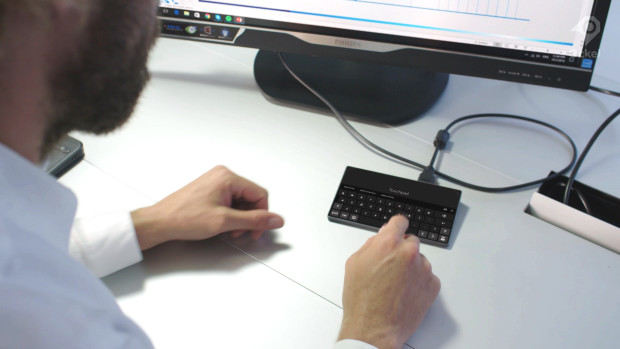What would you do with an iPhone-sized Windows 10 PC?

Ockel Sirius A is an extremely tiny computer running a full 64-bit version of Windows 10. The reasoning behind building such a tiny PC, could be easily questioned when taking into consideration that many desktop applications like Microsoft Office, Adobe Photoshop, and even Google Chrome (given enough open tabs), just can’t operate properly, or at all, with the restrictive hardware resources typical of such tiny devices.
When Microsoft unveiled the latest Lumia phones, the point of restricting their capabilities to merely mirror apps to a desktop display, instead of full desktop applications, was to avoid the obvious drawbacks of having consumers assume that their devices could do more than what they were capable of.
Incidentally, this is also the product of Microsoft’s experience with Windows RT, an apps-driven variation of Microsoft Windows that came preloaded with the first Surface tablets, which caused an outcry from consumers who thought that they were getting a Windows 8.1 PC, instead of a Windows-powered equivalent of the Apple iPad.

With that said, startup Ockel Computers has decided to tread in a territory where bigger companies dare not to gamble: a PC slightly bigger than a smartphone, on which to run desktop applications.
As we delve into the technical specifications of this device, there are a few things suggesting that while most resource-hungry applications will probably not run, this device is likely to address the basic requirements of consumers who have no need to run intensive processes on a daily basis.
The system is powered by a respectably fast quad core 2.56GHz Intel Atom, with 4GB of DDR3 RAM, which poses the question of what kind of heatsink this fanless system uses to keep all of its internals cool enough to be able to operate. This is also a concern when considering the integrated graphic hardware powered by an Intel HD graphic card capable of resolutions up to 1920 by 1080 pixels, with 4K and UHD support.
Due to the size of the device, a regular-size SSD is unlikely to fit inside such tiny case, thus the storage is handled by a 64GB eMMC Flash storage drive that can be enhanced by inserting an additional MicroSD card, or by plugging in an external drive via USB or USB-C.
While 64GB may seem like a stretch, considering the size of the operating system, one good thing is that Microsoft has baked into Windows 10 a method to compress the operating system, to shrink its size on devices with limited storage space, which kicks in automatically upon detection of the available storage.
Sirius A packs a full array of sensors and ports, including AC WiFi, LAN port, two USB ports, Bluetooth 4.2, an accelerometer, a gyroscope, and a magnetometer, as well as a front-facing camera, with microphone and speakers.

Sirius A is also capable of connecting to an external display via USB Type-C, HDMI and DisplayPort.
The battery life, at this stage, is a mere three hours, which means that when on the go, this device will require frequent access to a power outlet, or the additional power bank bundled with the device. With that said, the device is designed as a surrogate desktop in a similar way as a Lumia phone, and when connected to an external display, it can be used as both a trackpad, and keyboard.
The device has already doubled its target goal on IndieGoGo, with more than $255,945 raised at the time of this writing. The question is: will it find a market within consumers who are already used to their smartphones in a similar way?
As convenient as a pocket-PC may be, even when it runs a full-size version of Windows 10, Sirius A seems to fall short of fulfilling a defined purpose in a universe of devices that already have, such as the Apple Mac Mini, and any number of Windows 10 mini PCs, including Intel Compute Stick.
One could argue that the presence of a touchscreen and a battery makes this device ideal, and more useful than a HDMI stick PC, but when thinking of use cases, using any full-size operating system, may that be Windows 10, macOS, or ChromeOS, becomes a ridiculous endeavor, in consideration of the fact that the virtual keyboard alone presents the same exact challenge as it would on a smartphone, taking up so much screen real estate to completely defeat the purpose of having a desktop operating system running on a tiny device.
By this token, how would one handle working on a spreadsheet, or performing any basic task that require the ability to see what your are typing? The problem with a computing device as tiny as a smartphone is that consumers expect it to work like a smartphone, which is precisely why the size of tablets is rising instead of shrinking. Devices 7 inches and below present user experience challenges that make a device like the Sirius A very difficult to use, no matter the specs and resolution. Also, with respect to the fact that it allegedly performs better when hooked up to a display, what would be the point of making a PC that sacrifices performance to fit an unnecessary form factor?
Ready to shop?
PortableOne has the best deals on Windows 10 Pro laptops, featuring the latest hardware-based security features, and full BitLocker encryption to protect your files from prying eyes.